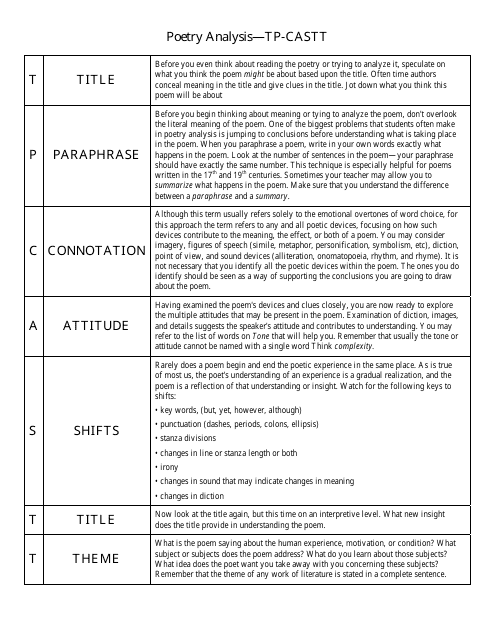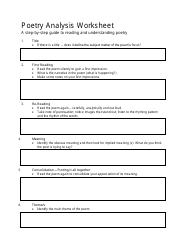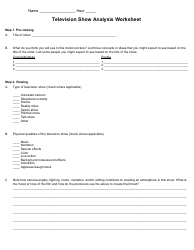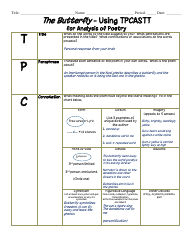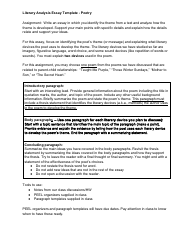Poetry Analysis Worksheet - Tp-Castt
The Poetry Analysis Worksheet - Tp-Castt is used as a tool to help analyze and understand poetry. It stands for Title, Paraphrase, Connotation, Attitude, Shifts, Title (again), and Theme. It guides readers in examining different aspects of a poem to gain a deeper appreciation and interpretation of its meaning.
The Poetry Analysis Worksheet - Tp-Castt is typically filed by students as part of their coursework.
FAQ
Q: What is Tp-Castt?
A: Tp-Castt is an acronym for Title, Paraphrase, Connotation, Attitude, Shifts, Title (again), and Theme. It is a method used to analyze and understand poetry.
Q: What does T stand for in Tp-Castt?
A: T stands for Title, which refers to the poet's choice of title and how it relates to the poem.
Q: What does P stand for in Tp-Castt?
A: P stands for Paraphrase, which involves restating the poem in your own words to ensure a clear understanding of its literal meaning.
Q: What does C stand for in Tp-Castt?
A: C stands for Connotation, which involves examining the words and phrases used in the poem and identifying their deeper meanings or associations.
Q: What does A stand for in Tp-Castt?
A: A stands for Attitude, which involves analyzing the speaker's or poet's tone and attitude towards the subject of the poem.
Q: What does S stand for in Tp-Castt?
A: S stands for Shifts, which refers to any noticeable changes in tone, speaker, or subject within the poem.
Q: What does the second T stand for in Tp-Castt?
A: The second T stands for Title (again), which involves revisiting the title after analyzing the poem to see if any new insights or interpretations arise.
Q: What does the second T stand for in Tp-Castt?
A: The second T stands for Theme, which involves identifying the overarching message or lesson conveyed by the poem.
